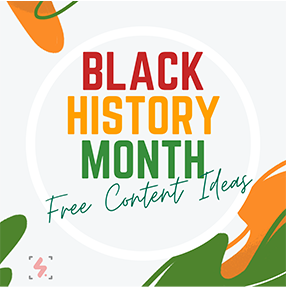Broadcasting Crystal Ball (Remi Productions)
(Originally published: May 2021) I remember the moment I found my passion for teaching. Unlike most, it wasn’t a gradual thing that built over time. It exploded like a stick of dynamite as I sat in a conference room with one of my assistant principals and the guy from IT who we were meeting with.
Long story short on the meeting; the system I worked for was a “microsoft” system and wanted to use Google apps. After several years of using Google, the IT department blocked the apps (Drive and YouTube) that I was using for everything in my classes. This was the fuse for my passion and it was lit.
The explosion that came during that meeting was in the phrase “I don’t care what it takes to do what I need to do. My greatest fear as a teacher is to send a group of kids out into the world and they think they are prepared but quickly find out that they aren’t.”
Since that meeting, I have done everything I can to make sure I know what’s coming down the pike for my students when they leave my program. While 2020 was a year I will never forget, I don’t think it is for the reasons you imagine. 2020 allowed me to see what’s possible in the live broadcast space for high schools. The impact of 2020 on broadcasting will be equal to color TV or HDTV.
The biggest area of change that I have noticed is how broadcasts are produced. I was recently invited to see how Bally Sports handled game 2 of the NBA playoffs between the Hawks and Knicks. This was a recon mission with Professor Vicki Michaelis from Carmical Sports Media Institute at the University of Georgia. Michaelis and I have worked together for several years with her students acting as talent for my broadcasts and mine providing the technical backbone. Michaelis and her students have traveled to our broadcasts for years but recent region realignments mean that the students would have to commute over 100 miles one-way to do half of our broadcasts.
We talked several times this year about the feasibility of doing a remote broadcast (REMI - Remote Integration). This is common now in college and most professional sports this year. The Hawks production of the playoff road games had no one from the Hawks broadcast team at Madison Square Garden. Instead, the trucks were in Atlanta in their normal place with their normal staffing. They were getting all of the same camera angles they expect when they are in the venue, they were calling shots and communicating just like normal. The difference was on the talent side.
Not far from where Bally produces Hawks Live on the concourse of State Farm Arena was a broadcast area that looked more high school than professional. Two tables set up facing each other, cables running 100 different directions. A camera. Two tripods. Two lights. A couple of Atlanta Legends - Bab Rathbun and Dominique Wilkins. A stage manager. A statistician. A couple of utilities. A producer. And no one else… seriously. They were the only signs of life in the 21,000 seat arena.
Rathbun and Wilkins were sitting 20 feet apart with Rathbun watching the program feed on a large flat screen and Wilkins using the arena’s center scoreboard screen as his monitor. They were wearing their broadcast headsets that had the crowd from Madison Square Garden blasting in their heads as if they were across the court from Spike Lee. For the rest of us, Bob’s booming voice echoed through the area and ‘Nique’s color commentary seemed to settle and counteract the boom. It was quite an odd scene and feeling considering the magnitude of the game they were providing content for.
As Michaelis and I processed the scene and workflow, I realized that this is something that could be done at the high school level. There have been some recent releases that make this completely possible with the right planning. The new BlackMagic Design Atem Switchers can pair with the ATEM Streaming Bridge to send your program signal anywhere in the world via the internet. The use of a zoom meeting for text communication helps to relay short messages. This paired with phone calls and texts can make this doable for many schools.
Here is the plan we developed - On the remote end, we would use the ATEM to mix the show. The video side will be cameras and graphics produced on site. For audio, we will split the stereo feed with one channel getting the environmental sounds and the other getting a producer mix. The producer mix will be a way to communicate what is happening that can’t be seen on the program feed (substitutions, someone warming up in the bullpen, etc). This would be sent to the ATEM Streaming Bridge.
The Streaming Bridge will be in Athens at the University of Georgia. There the environmental audio will be paired with play by play and color commentary provided by the Carmical students. The producer feed will be put into the ears of the talent but not going to the air. The final step would be to encode and push the stream from UGA to the viewers.
I will be completely transparent when I tell you that I am not looking forward to the process of getting this started. It’s not going to be something that I will consider “fun.” It’s going to be different and uncomfortable because I’m letting go of control on the final product. I’m trusting someone else to do the things that I typically do and I will be 100 miles away…
Ultimately, this is going to be the future for our students who want to produce sports. Prior to the broadcast, we asked Rathbun how he felt about doing broadcasts this way. He was quick to say how difficult it was and how much he feels like he misses a lot of the action but he acknowledged that for colleges, this is the way of the future simply because of the costs associated with shipping a crew and equipment all over the country.
So… if you are trying to prepare your students for the next step in their career, you need to look into the crystal ball of the future of sports broadcasts and you will see REMI production is the way your students will break into the industry.
Meet the Author, Tom White
Tom White is the Broadcast Engineer at Grady College of Journalism and Communication at the University of Georgia. Prior to that role, Tom taught at Morgan County High School and Rockdale Career Academy where he and his student produced thousands of live streams for sports, news, and community events. Tom’s program at the Rockdale Career Academy received the NFHS Network Program Of The Year in 2016 and his program at Morgan County High School received the New Program of the Year title in 2018.
Tom has been a long time contributor to many publications and is the host of Teaching to The Test Pattern Podcast.









Got shaky footage? No problem! In this quick tutorial, learn how to use Warp Stabilizer in Adobe Premiere Pro to smooth out your shots effortlessly.